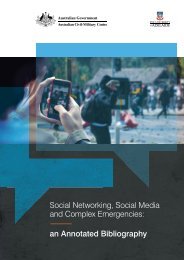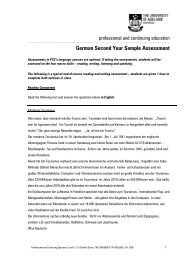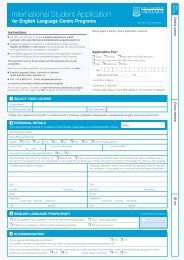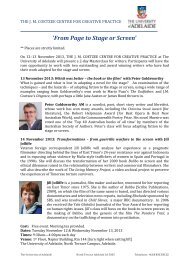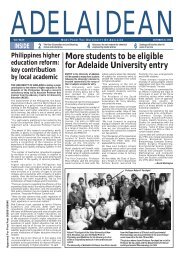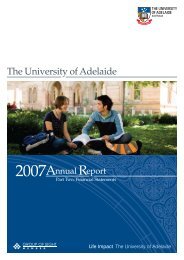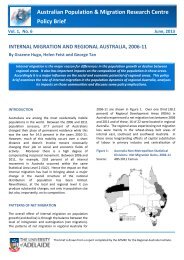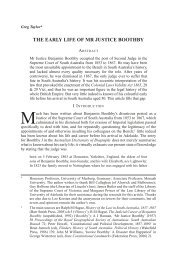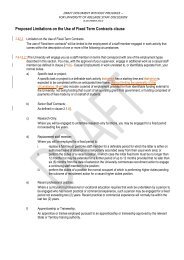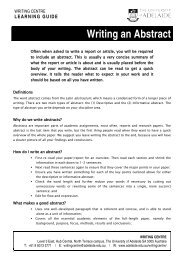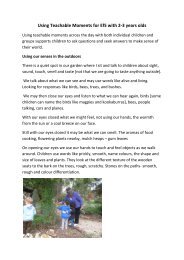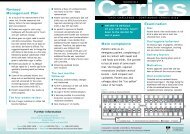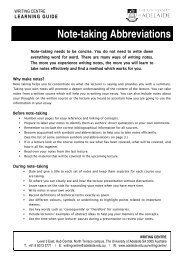Unbridling the Tongues of Women - The University of Adelaide
Unbridling the Tongues of Women - The University of Adelaide
Unbridling the Tongues of Women - The University of Adelaide
Create successful ePaper yourself
Turn your PDF publications into a flip-book with our unique Google optimized e-Paper software.
<strong>The</strong> line <strong>of</strong> least resistance<br />
Charles Reginald; in Tender and True first Robert North and Mary Lancaster, <strong>the</strong>n<br />
Rose Lancaster, Miles Davenant and Edward Masefield; in Mr Hogarth’s Will, Jane<br />
Melville and Francis Hogarth; Amy Staunton, Lord Darlington and Allan Lindsay in<br />
<strong>The</strong> Author’s Daughter; Kenneth Oswald and Edith Gray in Ga<strong>the</strong>red In; Liliard Abercrombie<br />
and Hugh Victor Keith in Handfasted: all become romantically entangled,<br />
and each entanglement results in marriage. But <strong>the</strong>re are some extremely unconventional<br />
features about <strong>the</strong> difficulties placed in <strong>the</strong> way <strong>of</strong> <strong>the</strong> lovers, and sometimes<br />
about <strong>the</strong> nature <strong>of</strong> <strong>the</strong> relationships that <strong>the</strong>y form, which indicate that Spence did<br />
not adopt those plot conventions unthinkingly. Ra<strong>the</strong>r, she seems to have engaged<br />
with <strong>the</strong>m, as a realistic framework within which she could depict her characters and<br />
explore <strong>the</strong> <strong>the</strong>mes which concerned her.<br />
She drew her characters, at least partly, from people she knew. In her autobiography<br />
she said that she shrank from <strong>the</strong> idea that she was capable <strong>of</strong> ‘taking <strong>of</strong>f’ her<br />
acquaintances. But she also confessed that Reginald in Clara Morison was her friend<br />
John Taylor, and that Margaret Elliot in <strong>the</strong> same novel was herself. 51 Her ‘shrinking’<br />
may have had more to do with consideration for <strong>the</strong> originals <strong>of</strong> such characters in<br />
that novel as Mr and Mrs Bantam, Miss Wi<strong>the</strong>ring, Mrs Tubbins and Mr Humberstone<br />
– all <strong>of</strong> whom are most appropriately named. Jeanne Young noted that entries<br />
in her diary ‘included very precise views on men, on friends, and on associates’, suggesting<br />
that Spence was a close observer 52 or ra<strong>the</strong>r, listener. For Spence considered<br />
that both <strong>of</strong> her sisters and her sister-in-law were ‘more observant <strong>of</strong> features, dress,<br />
and manners’ than she was. ‘I took in more by <strong>the</strong> ear. As Sir Walter Scott says,<br />
“Speak that I may know <strong>the</strong>e”. To my mind, dialogue is more important for a novel<br />
than description; and if you have a firm grasp <strong>of</strong> your characters, <strong>the</strong> dialogue will<br />
be true’. 53<br />
Sometimes her dialogue is more than true; it is extremely funny. Here is <strong>the</strong><br />
new-comer, Miss Wi<strong>the</strong>ring, talking with <strong>the</strong> South Australian-born Minnie Hodges,<br />
in what Kay Daniels has likened to ‘a verbal War <strong>of</strong> Independence’. 54<br />
‘It would have been a great thing for you, Miss Hodges, if you had been<br />
two or three years in a good boarding-school in England. It would have<br />
made you see things in <strong>the</strong> same light in which <strong>the</strong>y appear to an Englishwoman<br />
like me’.<br />
‘And I think that a very unpleasant light’, said Minnie. ‘We have gone<br />
with Mrs. Bantam to see five ladies today; I have been quite happy in<br />
53



